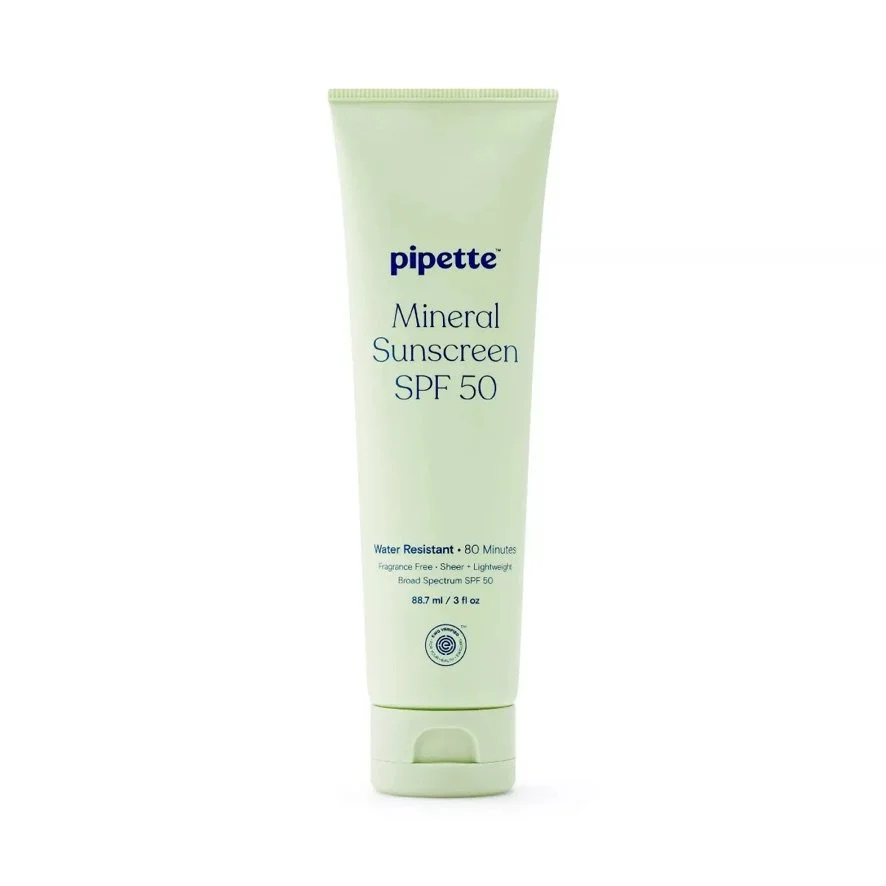The Mineral SPF Deep Dive: Protect Your Skin and the Planet
Explore why mineral sunscreens are the eco- and health-conscious choice for summer. Learn about reef-safe formulas, the dangers of chemical filters to marine life and humans, and how mindful sun exposure supports wellness.
Beyond Sunburn—Why Your SPF Choice Matters
Hey friend, let’s talk sunscreen. In our last summer-skin guide, we shared how to cleanse your skin without stripping and recommended mineral SPF favorites like ISDIN Eryfotona Actinica, Beautycounter Dew Skin, and Pipette for that dewy, protected glow. Today, we’re going deeper—because the sunscreen you choose doesn’t just impact your skin; it impacts our oceans and overall health.
In this post, you’ll learn:
The environmental impact of chemical UV filters on coral reefs and marine ecosystems
Emerging research on potential human-health concerns linked to chemical sunscreen absorption
The surprising benefits of mindful sun exposure for vitamin D, mood, and circadian rhythm
Practical tips for choosing, applying, and enjoying mineral SPF
1. Coral Meltdown: How Chemical Sunscreens Harm Marine Life
The Science of Reef Bleaching
Coral reefs are dying at alarming rates—chemical UV filters like oxybenzone and octinoxate have been shown to:
Induce coral bleaching by damaging DNA and impairing reproduction¹
Accumulate in seawater at concentrations toxic to marine organisms²
Environmental Case Study: In 2018, Hawaii became the first US state to ban sunscreens containing these chemicals to protect its reefs³—proof that it isn’t just "crunchy brainwashing" at play; an entire island chain acted on hard science to save their marine life.
Ecosystem Ripple Effects
Beyond corals, chemical filters threaten:
Plankton and algae that form the base of the food chain⁴
Juvenile fish survival and growth⁵
2. Skin Deep Risk: Potential Human Health Concerns of Chemical SPF
Absorption & Hormone Disruption
Recent studies have detected chemical filters in human blood and urine. Key concerns include:
Endocrine disruption: Some filters mimic or block hormones, potentially affecting thyroid and reproductive health⁶
Allergic and photoallergic reactions: Chemical sunscreens can trigger skin sensitivity in up to 15% of users⁷
Heat & Oxidative Stress
Chemical filters absorb UV and convert it to heat, which may:
Increase skin temperature and inflammation⁸
Promote photo-oxidative damage if not paired with antioxidants
3. The Mineral Advantage: Zinc Oxide and Titanium Dioxide
Physical Blockers: Reflect and scatter UVA/UVB rays without penetration
Reef-Safe: No harmful marine impact; biodegradable and inert
Gentle on Skin: Ideal for sensitive or acne-prone skin; non-comedogenic
Pro Tip: Look for micronized or non-nano particles to avoid white cast while maintaining effective UV protection.
4. Sunlight as Medicine: Mindful Exposure for Health
Vitamin D Synthesis and Immune Support
Just 10–15 minutes of direct sun on arms and legs can trigger vitamin D production, boosting immunity and mood⁹.
Circadian Rhythm & Mental Well-being
Morning sun exposure helps:
Regulate melatonin for better sleep¹⁰
Improve mood and focus by syncing your internal clock¹¹
Try the D-Minder App to track your sun exposure and vitamin D levels safely. It’s a great way to build up tolerance and understand when your body is primed for natural D synthesis.
Bonus Tip: Sun Protection from the Inside Out
We talked about this more in our Summer Skin Rituals post, but it’s worth repeating: your diet can boost your skin’s natural sun resilience. Antioxidants like astaxanthin, lycopene (hello, tomatoes), vitamin C, and healthy omega-3s work like an internal SPF—helping reduce inflammation and UV-induced damage from the inside out.
So yes, wear your SPF—but also eat the rainbow.
5. Choosing and Applying Mineral SPF: A Quick Guide
Check the label: Look for "100% mineral" or "physical" sunscreen.
Apply generously: Use at least a nickel-sized dollop for your face and 1 oz (a shot glass) for your body.
Reapply every 2 hours: Especially after swimming or sweating.
Layer under makeup: Mineral SPFs work well under moisturizers and primers.
Conclusion: A Sunscreen for Your Skin and the Sea
Switching to mineral SPF is one of the easiest, highest-impact choices you can make for your health and the planet. By choosing formulas free of oxybenzone, octinoxate, and other harmful chemicals, you protect your skin from UV damage—and help safeguard our coral reefs for generations to come.
Remember: sun safety is more than sunscreen—it’s an entire lifestyle of respect, mindfulness, and care for yourself and the environment.
What We’re Loving Right Now
References
Tsui M., et al. Occurrence, distribution and fate of sunscreen UV filters in coral communities. Environmental Science & Technology 2014.
Downs CA., et al. Toxicopathological effects of the sunscreen UV filter oxybenzone (benzophenone-3) on coral planulae and cultured primary cells. Archives of Environmental Contamination and Toxicology 2016.
Hawaii Revised Statutes § 321-31.5.
Goddard G., et al. Effects of sunscreen chemical exposure on marine phytoplankton. Marine Pollution Bulletin 2017.
Logan CA., et al. Impacts of chemical UV filters on larval fish survival. Ecotoxicology and Environmental Safety 2020.
Schlumpf M., et al. Endocrine activity and developmental toxicity of UV screens. Environmental Health Perspectives 2004.
Warshaw EM., et al. Allergic and photoallergic contact dermatitis to sunscreens. Dermatitis 2015.
Diffey BL. Temperature increase in the skin caused by UV absorbers in sunscreen. British Journal of Dermatology 2015.
Holick MF. Vitamin D for health: a global perspective. Mayo Clinic Proceedings 2013.
Figueiro MG., et al. Light, sleep and circadian rhythms: together at last. Sleep Health 2017.
Kalmbach DA., et al. The impact of morning light on mood and cognitive function. Journal of Psychiatric Research 2021.
